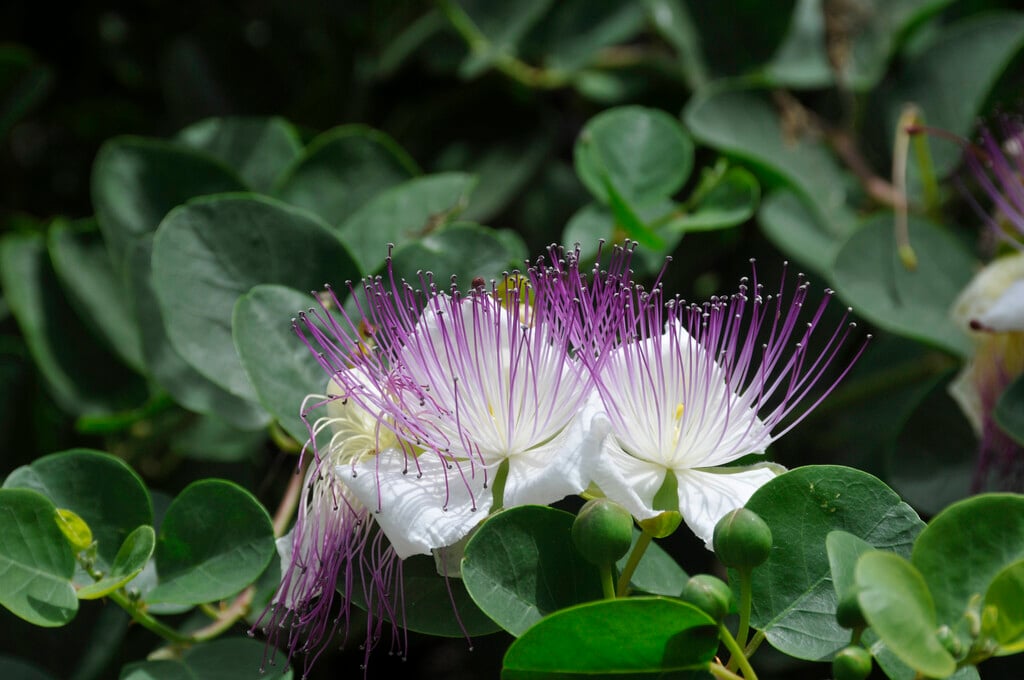Capparis spinosa
common caper
A tender, sprawling, shrub to 1m tall, bearing round, grey-green leaves to 4cm across. In summer it produces flowers comprised of four white petals surrounding a tuft of white to pink stamens. The unopened flower buds are pickled or salted and eaten as capers, as are the long-stalked, olive-shaped berries (caperberries)
Size
Ultimate height
0.5–1 metresTime to ultimate height
2–5 yearsUltimate spread
0.5–1 metresGrowing conditions
Moisture
Well–drainedpH
Acid, Alkaline, NeutralColour & scent
| Stem | Flower | Foliage | Fruit | |
| Spring | Green | |||
|---|---|---|---|---|
| Summer | White Pink | Green | ||
| Autumn | Green | |||
| Winter |
Position
- Full sun
Aspect
South–facing or West–facing
Exposure
Sheltered Hardiness
H1CBotanical details
- Family
- Capparaceae
- Native to GB / Ireland
- No
- Foliage
- Deciduous
- Habit
- Bushy
- Genus
A genus of flowering shrubs or lianas more commonly known as caper shrubs or caper bushes. Plants have fleshy leaves and white to pinkish-white flowers. The flower buds (capers) and fruit (caper berries) are both edible and are usually pickled
- Name status
Correct
- Plant range
- S Eurasia, Australia
How to grow
Cultivation
Under glass grow in peat-free, loam-based compost with added extra grit. Water moderately during the growing season and apply a high potash fertiliser monthly; water sparingly in winter
Propagation
Propagate by seed soaked in warm water for 2-3 days prior to sowing, at a temperature of 18-21°C. Germination is slow and erratic
Suggested planting locations and garden types
- Mediterranean climate plants
- Patio and container plants
- Conservatory and greenhouse
- Edible fruit
Pruning
See pruning group 6
Pests
May be susceptible to mealybugs
Diseases
Generally disease-free
Love gardening
Sign up to receive regular gardening tips, inspiration, offers and more
View our Privacy Policy
Get involved
The Royal Horticultural Society is the UK’s leading gardening charity. We aim to enrich everyone’s life through plants, and make the UK a greener and more beautiful place.
